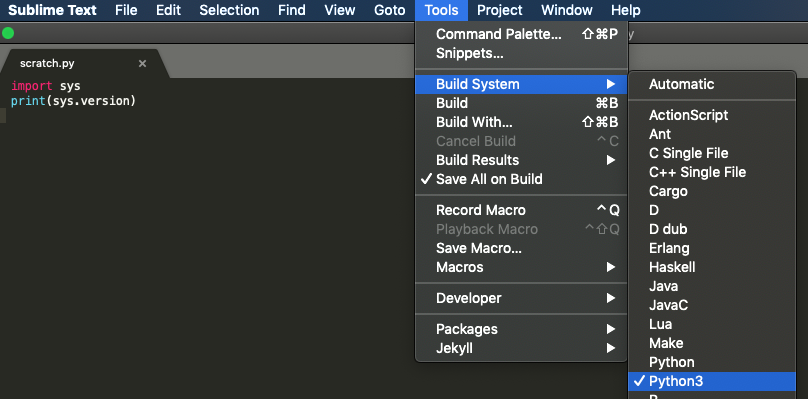

- #START USING PYTHON ON MAC HOW TO#
- #START USING PYTHON ON MAC MAC#
- #START USING PYTHON ON MAC WINDOWS#
There’s still a steep learning curve to handle, so we are even going to cover the basics such as how to install Python on a Mac.
#START USING PYTHON ON MAC MAC#
It’s a language that perfectly suits Mac because it overcomes traditional programming obstacles in order to humanize the coding process and make it more understandable.īut the sheer simplicity doesn’t make Python easy to learn. Python is a powerful programming tool, but it becomes a different kind of beast when you use it on a Mac. Linux mostly uses the contents of the file to determine what type it is.Last Updated: Wednesday 29 th December 2021 To linux, hello.py means the exact same thing as hello.txt, hello.mp3, or just hello. To make ~/.local/bin content executable the same way /usr/bin does type $PATH = $PATH:~/local/bin (you can add this line to your shell rc file, for example ~/.bashrc).įile extensions aren't necessary in UNIX-like file-systems. If you want a playground, a good idea is to invoke mkdir ~/.local/bin and then put scripts in there. Note that this mainly should be done for complete, compiled programs, if you have a script that you made and use frequently, then it might be a good idea to put it somewhere in your home directory and put a link to it in /usr/bin.


save your hello.py program in the ~/pythonpractice folder.#! /usr/bin/python3 print ( 'Hello, world!' ) Open up your favorite text editor and create a new file called hello.py containing just the following 2 lines (you can copy-paste if you want):.Create a folder on your computer to use for your Python programs, such as ~/pythonpractice.If you have both Python version 2.6.1 and Python 3.0 installed (Very possible if you are using Ubuntu, and ran sudo apt-get install python3 to have python3 installed), you should run python3 hello.py Don't forget to make the script executable by chmod +x.Type cd ~/pythonpractice to change directory to your pythonpractice folder, and hit Enter.In GNOME, open the main menu, open the Applications folder, open the Accessories folder, and select Terminal. In KDE, open the main menu and select "Run Command." to open Konsole.

#START USING PYTHON ON MAC WINDOWS#
This will cause the Windows terminal to open. In the Start menu, select "Run.", and type in cmd.Create a folder on your computer to use for your Python programs, such as C:\pythonpractice, and save your hello.py program in that folder.Now that you've written your first program, let's run it in Python! This process differs slightly depending on your operating system. Using print with parentheses (as above) is compatible with Python 2.x and using this style ensures version-independence. In Python 3.x, print is a proper function expecting its arguments inside parentheses. As such, it can be used without parentheses, in which case it prints everything until the end of the line and accepts a standalone comma after the final item on the line to indicate a multi-line statement. In Python 2.x, print is a statement rather than a function. By default, print appends a newline character to its output, which simply moves the cursor to the next line. This program uses the print function, which simply outputs its parameters to the terminal.


 0 kommentar(er)
0 kommentar(er)
